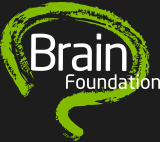
Watch Dr Alexander Bryson accept the research grant award and hear a bit about the project.
Project Summary:
Epilepsy is a common disorder in which episodes of abnormal electrical activity (seizures) arise within the brain. The first-line treatment of epilepsy is with antiseizure medications, yet many patients experience persistent seizures that are refractory to existing drugs.
Although the molecular targets of many antiseizure medications have been identified, it remains unknown how these drugs modify brain activity to prevent seizures, which limits efforts to develop more effective therapies. One reason for this knowledge gap is a lack of tools at our disposal to probe brain activity at sufficient detail to untangle how antiseizure medications work.
This project will tackle this issue using a technique to image brain activity at very fine-grained detail, known as two-photon calcium imaging, and a model of the brain grown in a dish, known as a brain organoid. This approach will enable us to characterise how antiseizure medications modulate brain activity, and may unlock the potential to develop new treatments that are tailored for specific forms of epilepsy.



 The Brain Foundation is the largest, independent funder of brain and spinal injury research in Australia. We believe research is the pathway to recovery.
The Brain Foundation is the largest, independent funder of brain and spinal injury research in Australia. We believe research is the pathway to recovery.